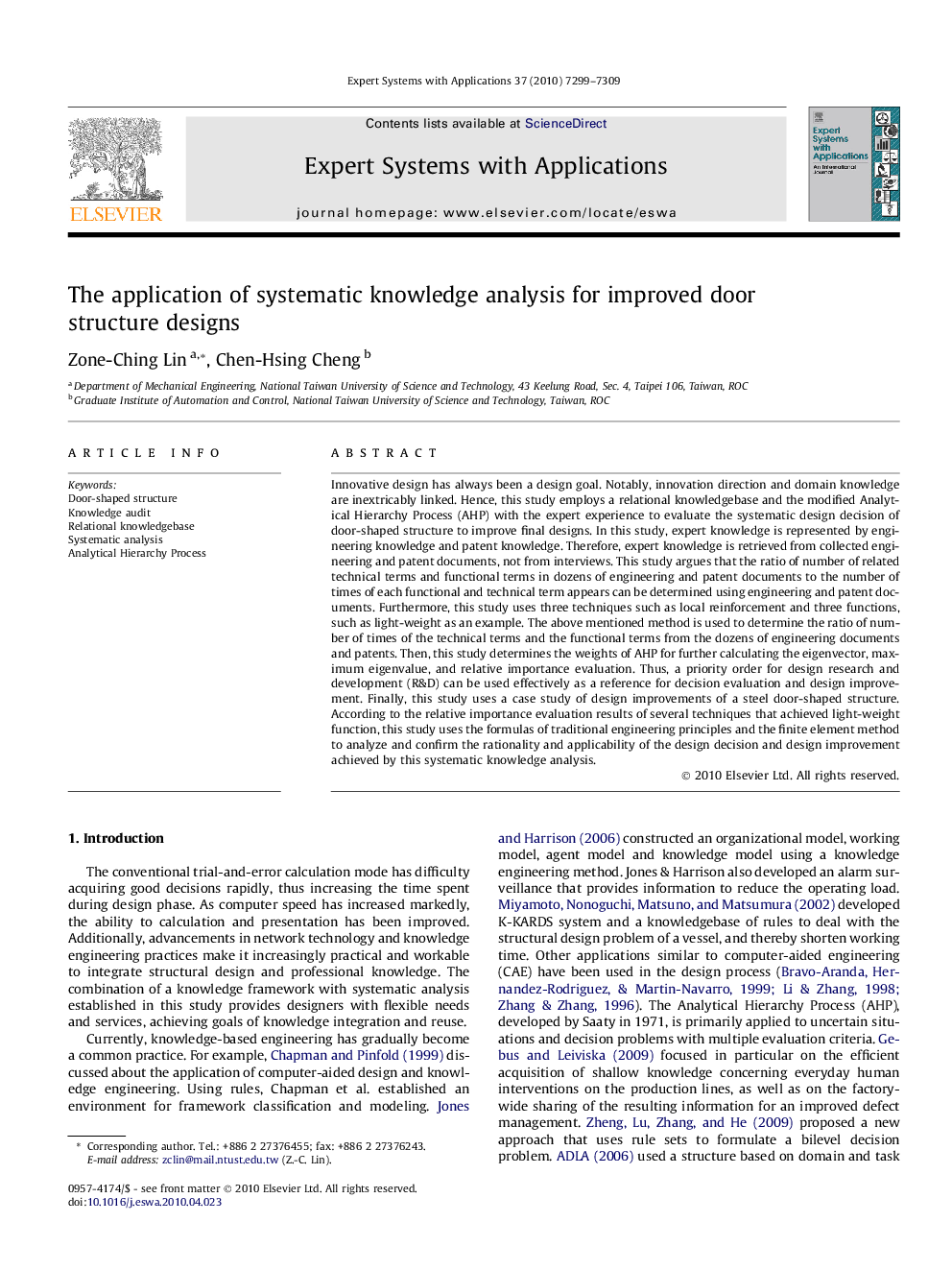| Article ID | Journal | Published Year | Pages | File Type |
|---|---|---|---|---|
| 386607 | Expert Systems with Applications | 2010 | 11 Pages |
Innovative design has always been a design goal. Notably, innovation direction and domain knowledge are inextricably linked. Hence, this study employs a relational knowledgebase and the modified Analytical Hierarchy Process (AHP) with the expert experience to evaluate the systematic design decision of door-shaped structure to improve final designs. In this study, expert knowledge is represented by engineering knowledge and patent knowledge. Therefore, expert knowledge is retrieved from collected engineering and patent documents, not from interviews. This study argues that the ratio of number of related technical terms and functional terms in dozens of engineering and patent documents to the number of times of each functional and technical term appears can be determined using engineering and patent documents. Furthermore, this study uses three techniques such as local reinforcement and three functions, such as light-weight as an example. The above mentioned method is used to determine the ratio of number of times of the technical terms and the functional terms from the dozens of engineering documents and patents. Then, this study determines the weights of AHP for further calculating the eigenvector, maximum eigenvalue, and relative importance evaluation. Thus, a priority order for design research and development (R&D) can be used effectively as a reference for decision evaluation and design improvement. Finally, this study uses a case study of design improvements of a steel door-shaped structure. According to the relative importance evaluation results of several techniques that achieved light-weight function, this study uses the formulas of traditional engineering principles and the finite element method to analyze and confirm the rationality and applicability of the design decision and design improvement achieved by this systematic knowledge analysis.
